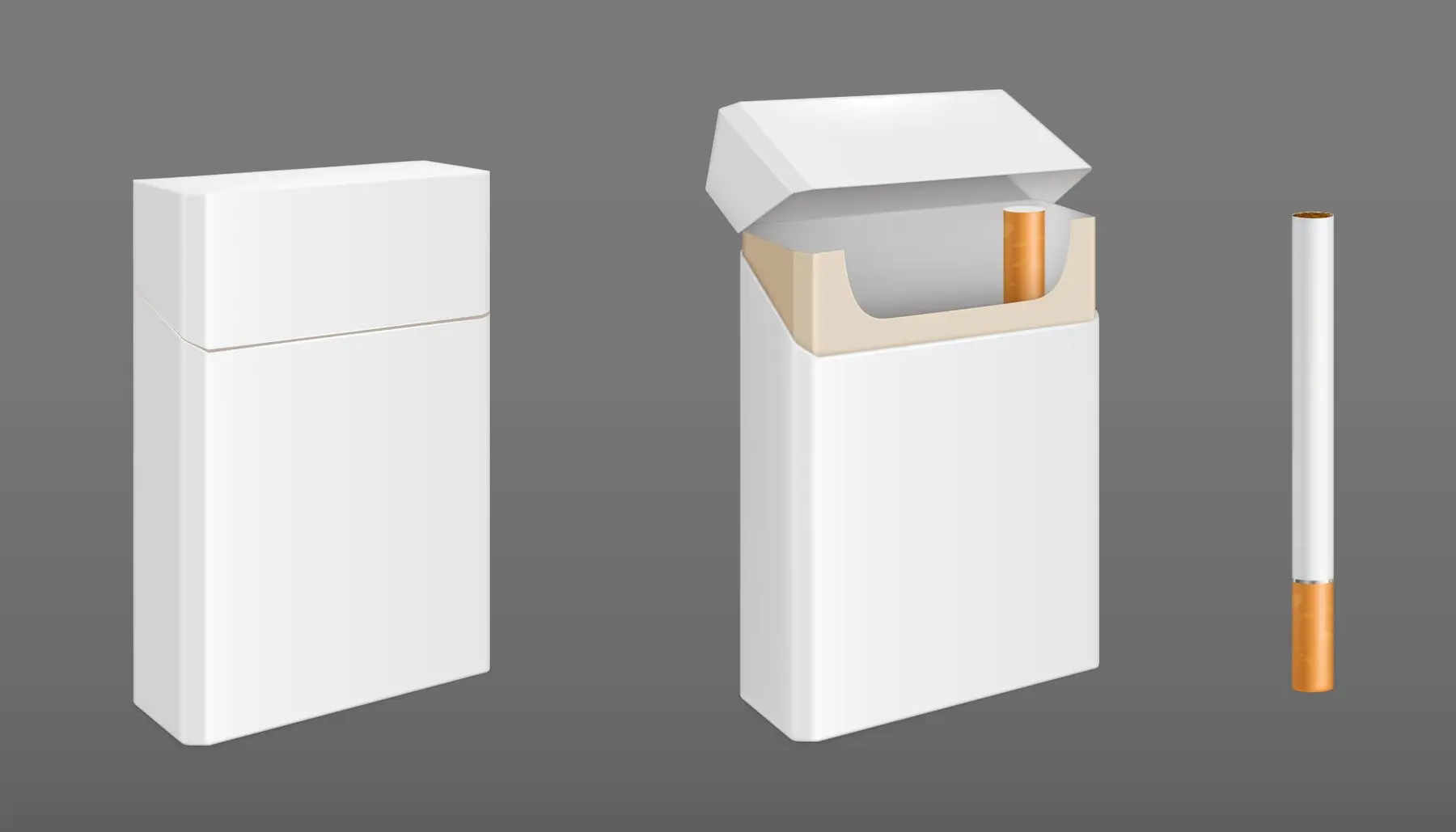How Many Boxes of Cigarettes in a Carton? | Learn the Standard Quantity

It’s a question that seems simple on the surface until you start considering the different packaging styles, brands, and country-specific regulations.
Whether you’re a smoker, a retailer, or just someone curious about the logistics behind tobacco sales, understanding what goes into a cigarette carton can give you more insight than you might expect.
Let’s start with the basics.
How Many Cigarettes Are in a Carton?
Typically, a carton holds 200 cigarettes. That’s because most standard cartons contain 10 packs, and each pack generally has 20 cigarettes.
But, like many things in the world of tobacco, the real answer is: it depends.
Not all cartons are built the same. In some cases, especially for wholesale or promotional purposes, cartons might contain 20 packs, which doubles the total count to 400 cigarettes. It really comes down to the market, the brand, and the local packaging regulations.
If you look beyond the standard 20-cigarette pack, you’ll find the numbers shift depending on where you are in the world:
- UK and Malaysia stick to a minimum of 20 cigarettes per pack.
- Canada often goes with 25, though 20-cigarette packs are still common.
- Ireland mixes it up: 20 is standard, but you’ll also see packs of 27 and 33.
- Australia? They take variety to the next level, with packs ranging from 20 all the way up to 50.
So while 10 packs per carton is the most common format, the actual number of cigarettes inside can vary depending on pack sizes in a specific region.
If you’re a retailer, distributor, or even just someone trying to calculate your smoking expenses or plan a shipment, knowing what goes into a carton helps with inventory planning, compliance, and pricing clarity. For international markets, these small variations can make a big difference.
Types of Cigarette Boxes That Fit in a Carton

Cigarette cartons might look identical from the outside, but inside, they’re often a mix of different box styles.
The U.S. is one of the world’s largest cigarette markets, pulling in around $82 billion in revenue in 2023 alone. That’s a lot of cartons, each packed with boxes built not just for function, but for form too.
Let’s break down the most common cigarette box types that are designed to fit inside these cartons:
1. Round-Edged Cigarette Pack
This is the classic. Most traditional cigarette brands use this design. The rounded edges give a softer grip and a more familiar feel in the hand.
2. Beveled-Edged Cigarette Pack
Slightly more refined in appearance, beveled-edge packs have angled corners that offer a sleeker, more modern look.
3. Slim Cigarette Pack
As the name suggests, these are thinner than standard packs. They’re designed for slim cigarettes, which are popular in some demographics and regions.
4. Shoulder Box Cigarette Pack
This one has a box-within-a-box style, a tray that slides out from a sleeve, similar to luxury perfume packaging. It’s not the most common for day-to-day retail.
Types of Cigarette Cartons
Not all cigarette cartons are created equal. Cartons differ based on packaging style, size, brand identity, target market, and even the time of year.
Let’s walk through the most common types of cigarette cartons and what sets them apart.
1. By Packaging: Hard Pack vs. Soft Pack
- Hard-Pack Cartons
These come with sturdy, rigid boxes that protect cigarette packs from damage. They’re ideal for transport, stacking on retail shelves, and longer storage. I - Soft-Pack Cartons
These use more flexible material, lighter and easier to carry, but less protective. They’re often used for local distribution. - Flip-Top Boxes
Many cartons today feature flip-top packaging for convenience. It’s easier for users to access cigarettes and helps maintain the structural integrity of the packs over time.
2. By Size: Standard, Slim, and Mini
- Standard Carton
10 packs, each with 20 cigarettes, totaling 200 cigarettes. This is the default for most brands. - Slim Carton
These are made for slimmer cigarette styles. The dimensions may be narrower, but the pack count typically remains at 10. - Mini Carton
These contain 5 packs, making them a more compact option. Mini cartons are useful for promotional packs, travel sizes, or lower-cost offerings.
3. By Brand and Flavor
- Menthol and Flavored Cigarettes
These may have distinct carton designs or colors to differentiate them from regular tobacco options. - Premium Packaging
High-end or luxury brands often offer upgraded cartons with a more refined finish (matte lamination, metallic accents, embossed logos. It’s not just about protection here) it’s about presentation.
4. By Marketplace or Region
- Some countries have plain packaging laws, which impact branding.
- Others might restrict pack sizes or require specific warnings that influence carton design.
5. By Promotions and Seasonal Offers
- Bonus Packs: Adding an extra pack for a limited time.
- Discounted Cartons: Bulk deals or buy-one-get-one styles.
- Seasonal Editions: Festive or themed designs to attract holiday shoppers or boost sales during slower months.
Benefits of Using Cigarette Packaging Boxes

In an industry where product condition, presentation, and brand identity all play a role in customer decisions, packaging isn’t just a box, it’s a business tool.
- Cigarettes are sensitive products. Exposure to moisture or even a bit of dust can affect their quality, and in turn, the customer experience. Well-designed packaging boxes act as a barrier against environmental factors.
- In markets where branding is still allowed (unlike regions with plain packaging laws), cigarette boxes serve a marketing function. The colors, logos, typography, and even the box shape influence consumer perception.
- Distinctive packaging helps a brand get noticed, remembered, and chosen. It’s a chance to signal quality, status, or even personality with just a glance.
- On the operations side, packaging plays a practical role. Standardized boxes make it easier to count, stack, store, and ship products. This consistency reduces handling time and minimizes the risk of errors in both retail and logistics.
Can You Personalize Cigarette Packaging Boxes As Per Your Liking?
Absolutely.
If you’re a tobacco brand (or planning to become one) custom cigarette packaging isn’t just possible, it’s essential.
In today’s competitive market, where shelf space is crowded and customer preferences are shifting, having control over your packaging gives you a real advantage. From how many cigarettes go in a pack to the look, feel, and message your box delivers, personalization allows you to shape the experience from the very first impression.
You can decide:
- How many cigarettes go into each pack (5, 10, 20, or more).
- Whether the box is slim, standard, or wide.
- The type of closure: flip-top, shoulder box, or something more unique.
Customization also lets you explore a range of print styles:
- Offset or digital printing
- Traditional branding or modern, clean layouts
- Full-color designs or monochrome themes
Finishes can subtly elevate the feel of your product, giving your packaging that tactile edge. Common options include:
- Matte or gloss lamination
- Spot UV for selective shine
- Soft touch coating for a premium, velvety feel
- Perforation or sealing tape for tamper protection
Over 21% of U.S. adults still smoke. That’s millions of daily touchpoints between your brand and a user. And with an average smoker consuming 1 to 5 cigarettes a day, that’s a lot of brand visibility, day in and day out.
In a Nutshell
Cigarette cartons may look simple, but there’s a lot going on behind the packaging. From the number of packs inside to the type of box used, every detail serves a purpose: protection, branding, compliance, or consumer appeal.
FAQs
Q: Will my cigarette consumption increase with an increase in pack or carton size?
Not necessarily. The size of the pack or carton doesn’t directly influence your consumption. Your smoking habits are more influenced by personal choice, not packaging. Larger packs or cartons may offer more convenience, but they don’t automatically lead to higher consumption.
Q: How much does an average cigarette carton cost in the USA?
The cost of a cigarette carton in the USA varies based on brand, state taxes, and other factors. On average, a carton (10 packs) costs between $60 and $100. However, prices can be higher in states with higher tobacco taxes.
Q: What is the difference between a pack and a carton of cigarettes?
A pack contains a small number of cigarettes, typically 20, while a carton is a larger container that holds multiple packs, usually 10 packs, equaling around 200 cigarettes.
Q: How many boxes of cigarettes are in a sleeve?
A sleeve typically holds 10 boxes of cigarettes. Each box usually contains 20 cigarettes, so a sleeve will contain around 200 cigarettes in total.
Q: How many packs of cigarettes are allowed on international flights?
The allowance varies by country, but most international flights allow passengers to bring 1-2 cartons (or around 200-400 cigarettes) for personal use without incurring duties. Always check the specific regulations of your departure and arrival countries.

Jennifer James
My specialty is developing cost-effective, attractive, and appropriate packaging for protecting products. I am working with the company to design custom packaging that meets the client’s requirements.
